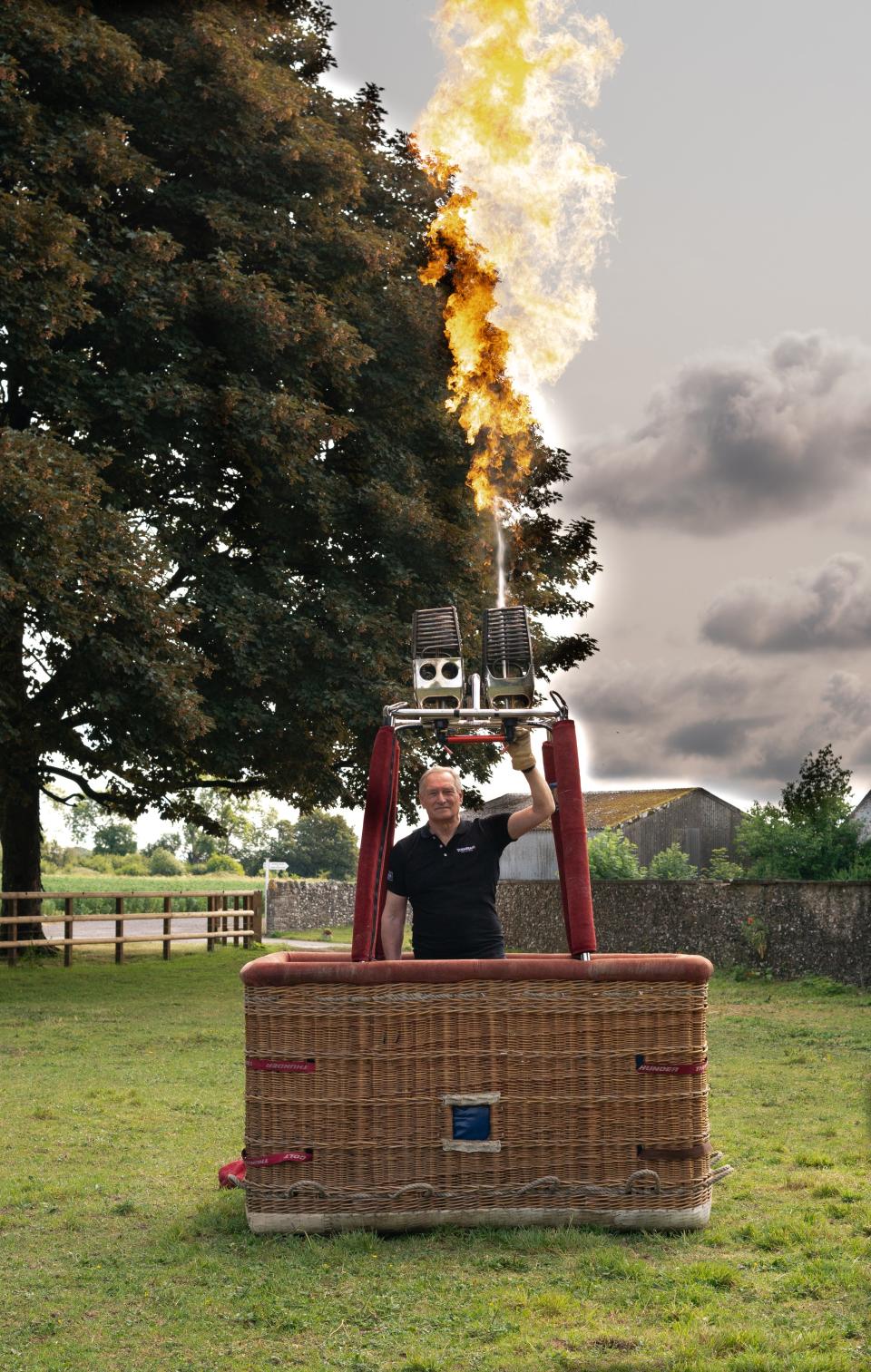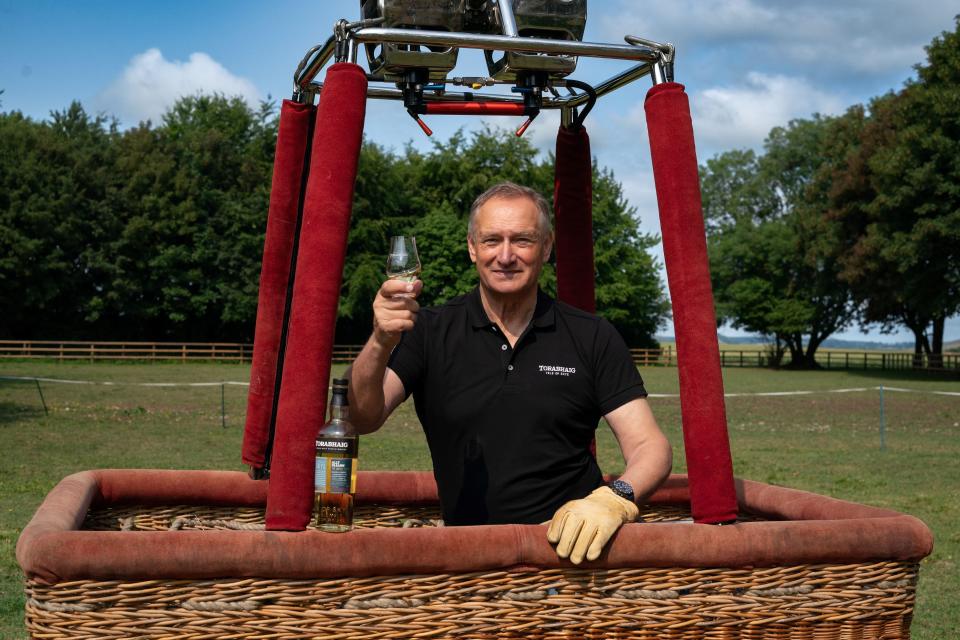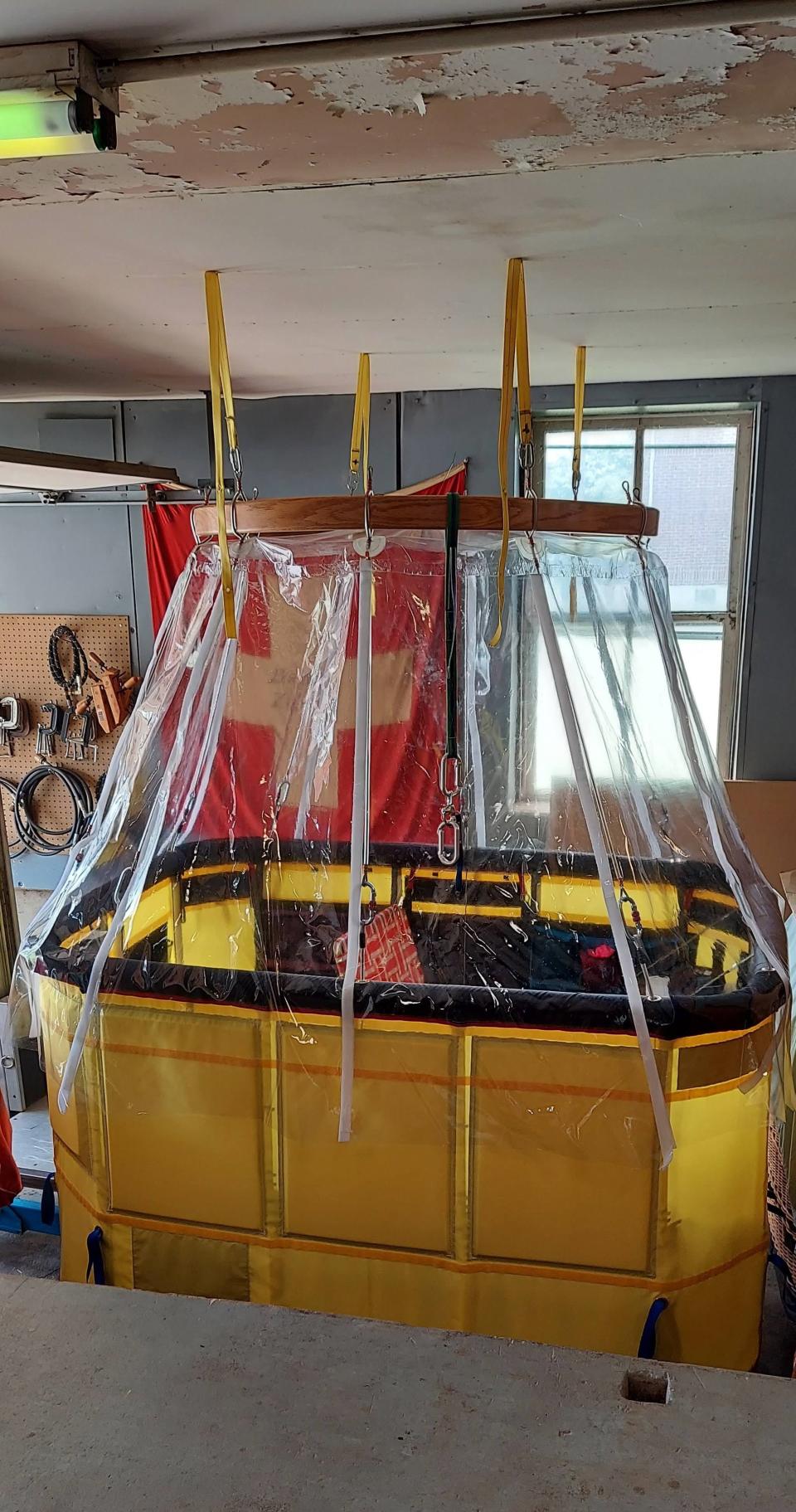American among 3 adventurers to attempt crossing Atlantic Ocean in hydrogen gas balloon
Three adventurers are planning to fly a hydrogen gas balloon over the Atlantic Ocean this month, living in a basket about the size of a large dinner table for the potentially record-breaking, five-day journey.
The adventurers — an American, a Brit and a Swede in their 60s and 70s — shared details of the upcoming trip with USA TODAY ahead of any other U.S. news outlet. The men talked about the biggest dangers they'll face, the safety measures they're taking and how they plan on navigating such tight quarters for upwards of 120 hours.
They also answered the most common question they get: How will they go to the bathroom in the balloon?
Around the world in 80 days: 81-year-old best friends from Texas travel the globe, inspire followers
Another type of adventure: An Atlanta engineer rode every Disney ride in the world in 12 days. Here's how he did it.
Doing it 'for the craic'

If successful, trip planners say it'll be the first crossing of the Atlantic in a hydrogen gas balloon and that it could set a record for the longest distance ever covered by the aircraft.
For one of the men, British explorer Sir David Hempleman-Adams, the trip will be one of his many death-defying accomplishments, including becoming the first person to complete the Explorers' Grand Slam: Reaching the geographic and magnetic North and South Poles and summitting the highest peaks in all seven continents, including Everest.
Hempleman-Adams, 66, is also the first person to cross the Atlantic in an open-basket (helium) balloon and to successfully fly to the North Pole in a gas balloon.

About his latest caper, Hempleman-Adams said: "I'm just doing it for the craic," an Irish term pronounced like "crack" roughly meaning "a bit of fun."
In addition to the craic, Hempleman-Adams also stands to become the only person to have flown across the Atlantic three times in an open-basket balloon.
A 50-year dream
For American Bert Padelt, the trip will be the realization of a dream since he was a boy growing up just outside the small coastal Virginia city of Hampton.
When Padelt's grandmother wanted him to settle down and be quiet, she would blow up a little red balloon for him.
"And I would hold this balloon in my hand and I would just picture going with the wind," he said. "For me, the interest with ballooning has always been the long-distance travel and traveling with the wind not knowing where you're going to go."

Padelt began working for a balloon manufacturer in Virginia in his 20s before starting his own company, Best Aviation Services, with his wife Joanie, also a balloonist. They're now based in Bally, Pennsylvania, about 40 miles northwest of Philadelphia.
Padelt built the balloons that have helped Hempleman-Adams achieve some of his biggest dreams. Padelt's own remained elusive.
"This is something that I've been wanting to do for the past 50 years, and I've lived those 50 years through other people like David," he said. "So for me to have this opportunity now, at such a late time in my life, it's the perfect goal."
The rest of the team

Frederik Paulsen, 72, is a billionaire, aviator, scientist and the founder of trip sponsor Torabhaig Scotch whiskey, based on the Isle of Skye in Scotland.
Paulsen, along with polar explorer François Bernard, was the first to cross the Bering Strait from Alaska to Russia in an ultralight aircraft, according to trip organizers.
Paulsen once rode inside a deep-sea submersible known as a bathyscaphe more than 14,000 feet down to the floor of the Arctic Ocean to touch the “true” North Pole, Forbes wrote about Paulsen in 2013.
The "particular species of billionaire who uses a chunk of their fortune seeking adventure and exploration," including Richard Branson and Jeff Bezos, "don't hold a wind-proof candle" to Paulsen, Forbes wrote.
Paulsen, who lives in Lausanne, Switzerland, inherited a pharmaceutical company, Ferring, from his father in the 1980s. The company made $2.4 billion in 2022.
When is the trip?

Because ballooning relies heavily on good weather, the trip's start date is unclear. But the three men plan to launch from Presque Isle, Maine, sometime this month once they get a good five-day forecast.
Thunderstorms are the biggest threat to their safety, Padelt said from his workshop in Presque Isle, where he's been building the balloon they're taking since February.
With a thunderstorm, "you could have severe updrafts," he said. "Some of them could be severe enough that it could actually rupture the balloon."
Unlike an airplane, he said, "you can't outrun a storm or fly in a different direction to avoid it."
Once the trip does start, it can be tracked here.
Where will the balloon land?
After about five days of flying, the men hope to land somewhere in Europe. They won't know roughly where on the continent until closer to the end of the journey, they said.
"It's a big bullseye," Hempleman-Adams said from his farm in Box, Wiltshire, just outside of Bath. "So we can go from northern Norway all the way down to Gibraltar, Spain."
Personally, he's hoping to land near a good pub.
"I've been off the booze for two months now," he said, adding that he has to keep his weight down for the trip. "I just think a sniff of anything will be very nice."

Hempleman-Adam's biggest fear is ending up in the North Atlantic at night.
"Going across the Atlantic in a balloon is dangerous," he said. "Obviously you minimize the risks as much as possible ... but this is down to the weather. And as we know, the weather guys have got the biggest computers in the world and they can still get it wrong."
As a precaution, the men will have immersion suits made for survival in cold waters and a lifeboat.
How will they 'do a poo'?
The No. 1 question the adventurers get about their trip is also the No. 2 question.
"The only downfall of this whole thing — three guys in a basket — is going to be if you're gonna do a poo," Hempleman-Adams said. "It's going to be interesting how we work that one out."
Padelt is a bit more optimistic and is confident it won't be an issue.
"It's camping in the sky," he said. "You have a camping toilet, basically, with a bag. It's very simple, and it's a biodegradable bag that when you're done you hang it over the side of the basket."

Hempleman-Adams said he might have a few ground rules for his fellow balloonists.
"Some of us will be looking over the side and we'll get a pretty big air freshener and let the other guy have his moment," he said about privacy. "The one thing that I won't let them do is go and read a magazine while he's doing it. He's got 10 minutes and that's it."
When the men need to offload some ballast — or weight that's used to stabilize the balloon — that's when the poo will be released.
"We might hold it all the back until we come in over France," Hempleman-Adams joked, doing nothing to quell the longstanding rivalry between England and France.
By the numbers

The adventurers broke down some figures involved in the flight:
Amount of hydrogen gas being used: 90,000 cubic feet, or about 6,400 pounds
Amount of sand being used for ballast: 4,800 pounds in 160 bags
Gallons of water for drinking: 23
Basket size: 6.5 x 5 feet
Balloon: 1,000 yards of lightweight nylon taffeta fabric
A publicist who has been promoting the trip said he didn't know the exact cost but that the team chose a low-tech, low-budget route by using an open wicker basket and hydrogen, which is much cheaper than helium (and also more dangerous).
For sustenance, the men will be able to choose from dehydrated meals, a selection of cookies and other snacks.
They'll also have a few bottles of Torabhaig Scotch whiskey. If they experience thunderstorms, they may need it just as much as the lifeboat.
Amanda Lee Myers covers news, adventure and the human experience for USA TODAY. She can be reached at AmandaMyers@usatoday.com and found on X at @AmandaLeeUSAT.
This article originally appeared on USA TODAY: Three adventures to cross Atlantic Ocean in hydrogen gas balloon

